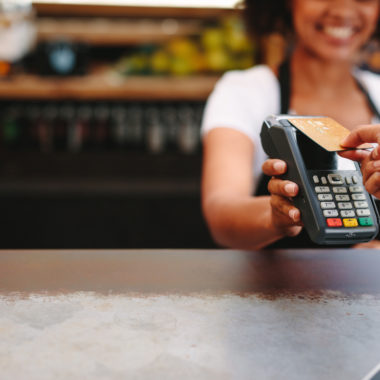The Covid-19 pandemic has accelerated the transition to convenient and more secure ways of paying. With increasing numbers of consumers favouring payment methods that are safer and more hygienic, contactless payments have been on the rise worldwide. In the UK alone, this method accounted for more than a quarter of all payments in the past year.
As consumers shift away from more traditional ways of paying like cash and PIN cards, demand for contactless payments is continuing to grow. This has led to many countries raising the payment threshold for contactless; France and many other European countries increased the limit to €50 from May last year.
What’s more, shoppers in the UK will be able to spend £100 when making a contactless payment from 15 October, as the government more than doubles the spending limit. This will allow consumers to make higher value transactions using their contactless card, like doing the weekly shop.
Governments and financial institutions are investing resources to mitigate the impact of Covid-19 on the economy, citizens and businesses, and to respond effectively and efficiently to society’s new needs. But how will citizens react to the new contactless threshold? How can banks ensure that the right protection is in place to keep a positive perception about payments’ safety and security?
There is a new innovative method to provide fast and secure contactless payments while ensuring great convenience thanks to biometric technology.
Bringing biometrics to the payment card
The biometric payment card uses specific characteristics unique to the user, such as the details of their fingerprint, to verify a transaction. Biometric payment systems offer a number of benefits and are fast replacing traditional authentication methods such as PIN numbers.
By using this technology, biometric cards offer more security than conventional contactless payment methods. When processing a transaction, the card compares the user’s fingerprint on the scanner with the reference data stored in the card’s secure chip, before authorising the payment. No personal data is held on a bank’s servers or sent over the air to a centralised database. This means that if a card is lost or stolen, users don’t have to worry about fraudulent activity on their account as the owner’s fingerprint is needed to authorise the transaction. This adds an extra layer of protection and ensures that the user’s account details are kept secure.
This added protection means that biometric cards do not have a payment threshold, allowing consumers to make low or high value transactions without having to worry about their card being fraudulently used or rejected.
Biometric payment cards also don’t require users to enter a PIN on the Point of Sales (POS) terminal when making a payment – users can simply use their fingerprint to verify a transaction. This means that users no longer need to remember multiple PIN numbers for different accounts, allowing for a seamless and secure banking experience.
For banks, the added security of biometric payment cards means that they can rely on the secure authentication of the cardholder and benefit from increased trusted transactions. It also generates less false declines and therefore increases customer confidence. By enrolling biometric payment cards, banks can reduce administrative costs and optimise their processes. Several banks have already started rolling out the biometric payment card, including the RBS Group and BNP Paribas which is proposing the solution to all of its VISA premier customers.
As contactless payments continue to soar worldwide, demand for faster, more secure ways of paying will continue to grow. The biometric payment card brings all the benefits to be at the forefront of this transition towards contactless technology.
Interested and want to learn more about the benefits of the biometric payment card? Leave a comment below and make sure to also follow us on Twitter at @ThalesDigiSec!



